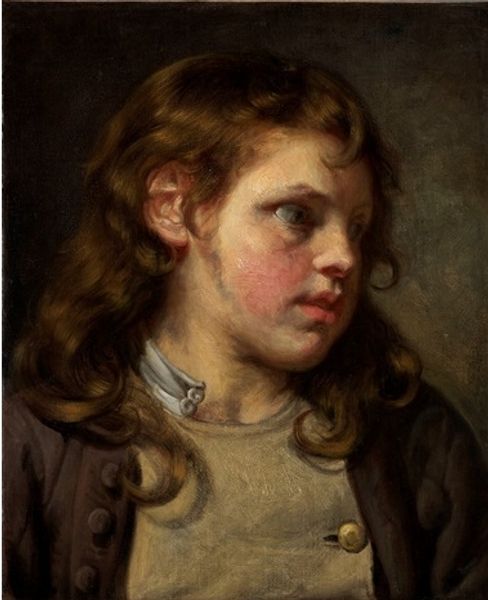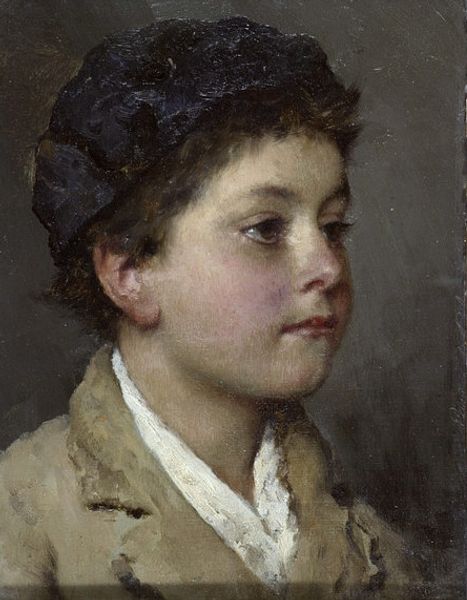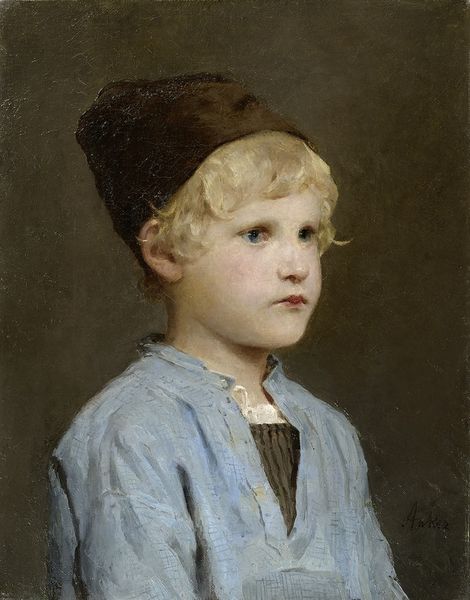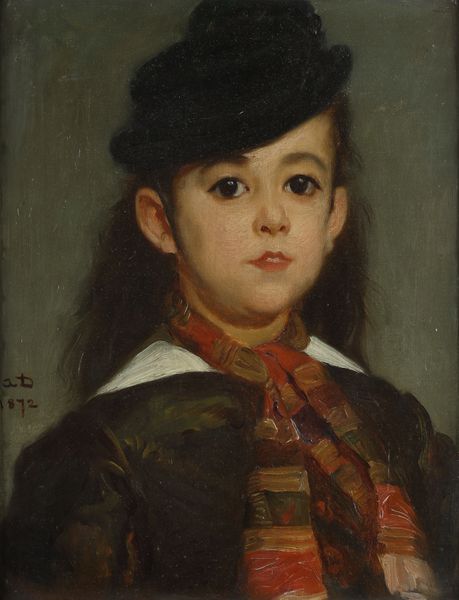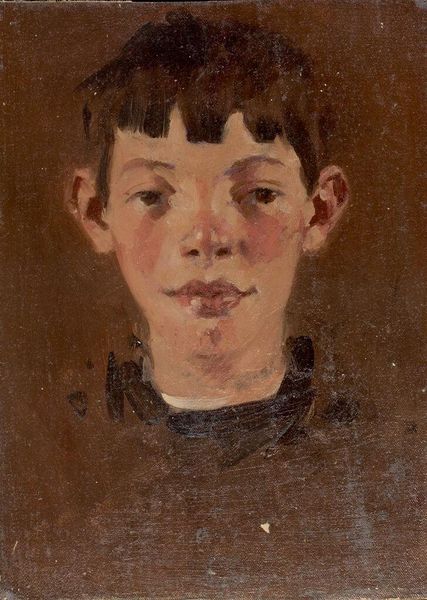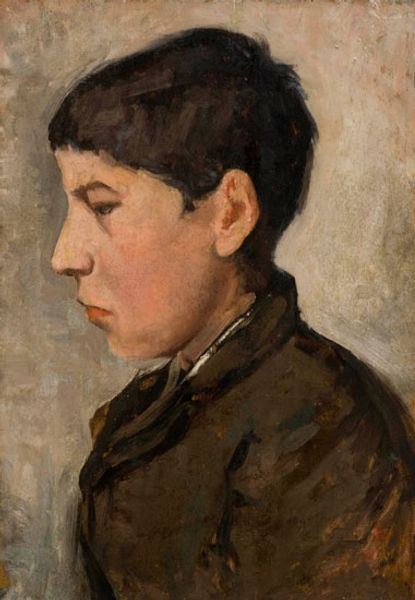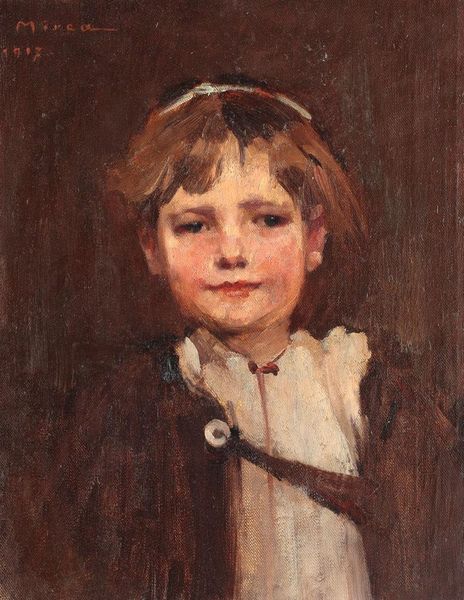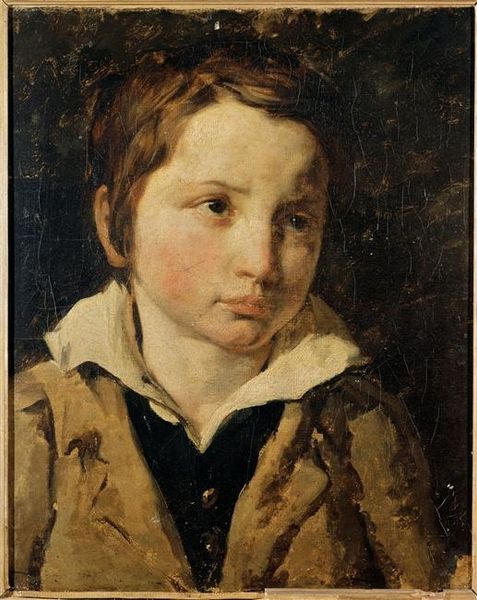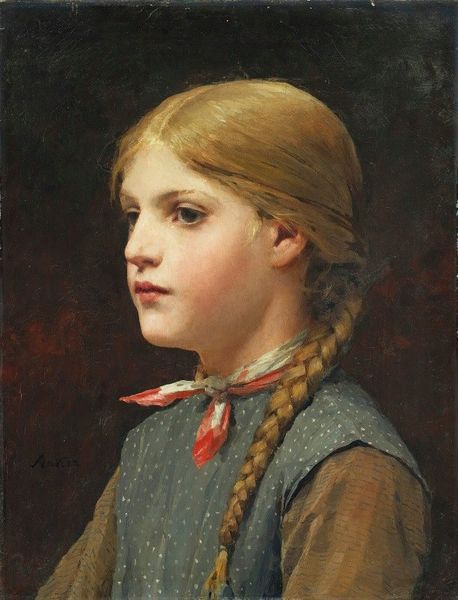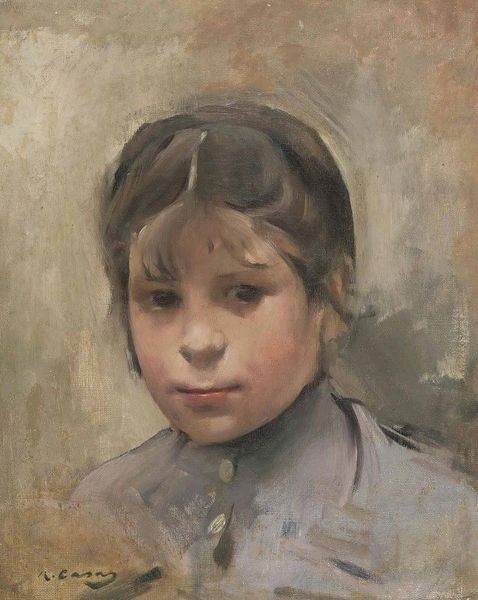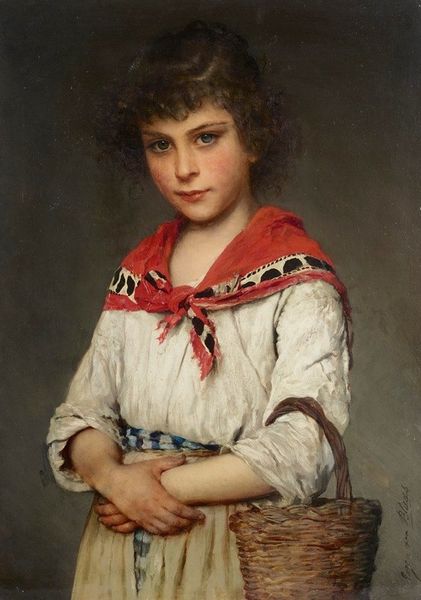
painting
#
portrait
#
figurative
#
portrait
#
painting
#
impressionism
#
portrait reference
#
portrait head and shoulder
#
animal drawing portrait
#
portrait drawing
#
genre-painting
#
facial portrait
#
academic-art
#
portrait art
#
fine art portrait
#
realism
#
celebrity portrait
#
digital portrait
Copyright: Public Domain: Artvee
Curator: Standing before us is Frank Duveneck’s "Whistling Boy," painted circa 1870s. What catches your eye? Editor: The muted palette, mostly browns and beiges. The surface looks thickly worked, almost troweled on, creating an immediate tactile quality. I'm wondering about the material choices available to Duveneck, and what those meant culturally in the era of production? Curator: Certainly, that impasto is key. The work feels very grounded. The boy's face, though, also draws me in; his slight pout, those high flushed cheekbones – he seems caught between youthful innocence and something more knowing. What might the gesture of whistling convey, do you think? Editor: Perhaps an attempt at asserting some form of control or self-expression within constraints of youth? Looking at the clothing – dark and functional. Were these garments constructed locally? Are the buttons bone, perhaps? Each object speaks volumes about everyday realities. Curator: Indeed, even that feather tucked jauntily into his cap introduces a small detail of individuality. Whistling could also be seen as an act of quiet rebellion. During this period, portraiture of children shifted from highly formal representations toward capturing fleeting moments. Could whistling simply denote this candid nature? Editor: I find myself focused again on that impasto. What were the standard practices in mixing paints? Were there apprentices involved in the layering process? It’s tempting to strip away the romance and just look at the skilled labor inherent in producing such an object. Curator: Well, the Romanticism seems inseparable from the labor here. He seems both urchin and angel simultaneously. This portrait allows us a glimpse of childhood teetering on the precipice of adulthood and its impending responsibilities, and his place in society. Editor: Ultimately, I'm interested in the conditions that allowed for the boy's portrait to be created—economic, artistic, even social frameworks—that determined what was visually possible. Curator: Precisely; symbols shift according to time. Duveneck provides a lasting echo across these decades with such nuanced observation of form. Editor: Right, the image gives texture and meaning to this particular time and place and suggests how art carries these qualities.
Comments
No comments
Be the first to comment and join the conversation on the ultimate creative platform.
